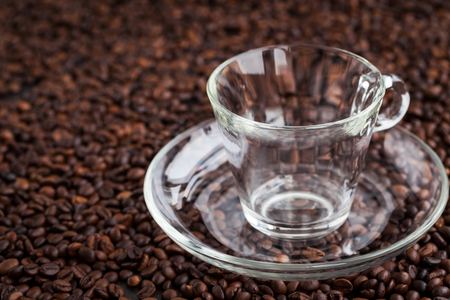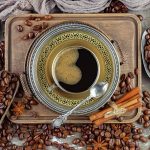Introduction to Arabica and Robusta
When you grab your morning cup of coffee, chances are it’s made from either Arabica or Robusta beans. These two types of coffee beans dominate the global market and play a huge role in how your coffee tastes. But what exactly makes them different? Let’s take a look at where they come from and why they matter so much.
What Are Arabica and Robusta?
Arabica (Coffea arabica) and Robusta (Coffea canephora) are the two most common species of coffee beans. Together, they make up nearly all of the world’s coffee production. Each has its own unique characteristics that affect everything from flavor to caffeine content.
Where Are They Grown?
These beans thrive in different climates, which influences their flavor profiles:
| Bean Type | Main Growing Regions | Altitude |
|---|---|---|
| Arabica | Latin America, East Africa, parts of Asia | High altitude (2,000–6,000 ft) |
| Robusta | Central & West Africa, Southeast Asia (especially Vietnam), Brazil | Lower altitude (sea level to 2,000 ft) |
Why Do These Beans Dominate the Market?
The global coffee market is dominated by Arabica and Robusta because they each bring something valuable to the table. Arabica is prized for its smooth, complex flavors and mild acidity, making it popular among specialty coffee lovers. Robusta, on the other hand, is known for its strong, bold taste and higher caffeine content—plus its easier to grow and more resistant to pests.
A Quick Comparison
| Feature | Arabica | Robusta |
|---|---|---|
| Taste Profile | Smooth, sweet, fruity or floral notes | Strong, bitter, earthy or nutty notes |
| Caffeine Content | 1.2%–1.5% | 2.2%–2.7% |
| Plant Hardiness | Sensitive to climate and pests | Disease-resistant and hardy |
| Price Range | Generally higher-priced due to quality and growing conditions | More affordable due to ease of cultivation |
Understanding these basics sets the stage for exploring how bean type impacts the flavor in your cup—which we’ll dive into next.
2. Flavor Profiles: What Sets Them Apart
When it comes to coffee, flavor is everything. And the type of bean—Arabica or Robusta—plays a big role in how your cup tastes. Each has its own unique profile that appeals to different preferences. Let’s break down how sweetness, bitterness, acidity, and body differ between these two popular beans.
Sweetness vs. Bitterness
Arabica beans are known for their smooth, naturally sweet taste. You might notice hints of sugar, fruit, or even chocolate in a well-brewed Arabica. On the other hand, Robusta tends to be bolder and more bitter, with earthy or nutty undertones. This stronger flavor can be a little intense for some but perfect for others who like a punchier brew.
Acidity Levels
If youve ever sipped on a bright, tangy coffee, chances are it was made from Arabica beans. Arabica has higher acidity, which gives it that crisp and lively feel. Robusta is lower in acidity, resulting in a flatter and more neutral flavor profile thats less sharp on the palate.
Body: Light vs. Heavy
The “body” of coffee refers to how it feels in your mouth—light and tea-like or heavy and creamy. Arabica usually has a lighter body, which makes it easy to drink and enjoy throughout the day. Robusta delivers a fuller, heavier mouthfeel that works well in espresso blends where you want something strong and bold.
Flavor Comparison Table
| Flavor Element | Arabica | Robusta |
|---|---|---|
| Sweetness | High – notes of fruit, chocolate | Low – more earthy or grainy |
| Bitterness | Mild | Strong |
| Acidity | High – bright and crisp | Low – smoother but flatter taste |
| Body | Light to medium | Full and heavy |
The Bottom Line on Taste
If you enjoy a delicate, complex cup with fruity or floral notes, Arabica is likely your go-to bean. But if youre after strength, depth, and a kick of caffeine (yes—Robusta has more!), then Robusta might just hit the spot. Both have their place depending on what kind of experience you want from your coffee.
![]()
3. Caffeine Content and Its Impact
One of the biggest differences between Arabica and Robusta beans lies in their caffeine content, which plays a major role in how each type tastes, feels, and functions—especially for American coffee drinkers who often choose their brew based on energy needs or flavor preferences.
Caffeine Levels: Arabica vs. Robusta
Caffeine isnt just about the buzz—it also affects bitterness, mouthfeel, and how intense a cup of coffee tastes. Heres a quick comparison of the two bean types:
| Bean Type | Average Caffeine Content | Flavor Impact | Mouthfeel |
|---|---|---|---|
| Arabica | 1.2% – 1.5% | Smoother, milder, more nuanced flavors | Lighter body, silkier texture |
| Robusta | 2.2% – 2.7% | Bolder, more bitter, earthy notes | Heavier body, sometimes gritty or sharp |
Why It Matters to American Coffee Drinkers
In the U.S., coffee is often part of a daily routine—whether its that early-morning wake-up call or an afternoon pick-me-up. The higher caffeine level in Robusta makes it a go-to choice for instant coffee and energy-boosting blends. However, many Americans prefer Arabica for its smoother taste, especially when sipping specialty brews like pour-overs or lattes.
If You’re Looking For…
- A strong kick: Go with Robusta-heavy blends or espresso shots featuring Robusta.
- A smooth sip: Choose 100% Arabica beans for balanced flavor without overwhelming bitterness.
- An all-day drink: Arabica’s lower caffeine makes it easier on the system if you enjoy multiple cups throughout the day.
The Bottom Line on Caffeine and Flavor
The caffeine content doesn’t just wake you up—it shapes your whole coffee experience. Whether you’re reaching for comfort or clarity, knowing the difference between Arabica and Robusta helps you brew with purpose.
4. Price and Quality Perception in the U.S.
In the United States, coffee culture is deeply influenced by how people perceive quality—and a lot of that perception comes down to the type of bean used. Arabica and Robusta beans are not only different in taste but also in how theyre valued by American consumers, which directly affects their price and demand.
Arabica: The Premium Pick
Arabica beans are often seen as the higher-quality option in the U.S. market. They’re known for their smooth, mild flavor with hints of fruit or sugar, and lower bitterness compared to Robusta. Because of this, most specialty coffee shops, premium brands, and artisanal roasters prefer Arabica. Consumers associate Arabica with a better-tasting cup and a more sophisticated coffee experience.
This perception leads to higher prices for Arabica beans. Many Americans are willing to pay more for what they see as a premium product—even if they can’t always pinpoint the difference in taste, they trust the label “100% Arabica.”
Robusta: Budget-Friendly but Misunderstood
Robusta beans have a stronger, more bitter flavor and contain almost twice the caffeine of Arabica. In the U.S., Robusta is often linked to instant coffee or value brands, which gives it a reputation for being lower in quality. Because of this, its typically sold at a lower price point.
However, Robusta has its strengths—it’s more resistant to pests and grows at lower altitudes, making it cheaper to produce. Some espresso blends use Robusta for its thick crema and bold body. Still, most American consumers are less familiar with these benefits and often overlook Robusta when shopping for coffee.
How Consumer Preferences Shape the Market
The strong preference for Arabica in the U.S. has shaped not just pricing but also availability. Coffee brands cater to what people want, so shelves are filled with “100% Arabica” labels. Meanwhile, Robusta-based products are marketed more toward budget-conscious shoppers or used quietly in blends without much fanfare.
Arabica vs. Robusta: U.S. Market Comparison
| Feature | Arabica | Robusta |
|---|---|---|
| Flavor Profile | Smooth, sweet, fruity notes | Bitter, earthy, stronger body |
| Caffeine Content | Lower | Higher |
| Price per Pound (Avg.) | $10–$20 | $5–$10 |
| Common Use in U.S. | Specialty & premium coffees | Instant coffee & commercial blends |
| Consumer Perception | High-quality & desirable | Budget & less refined |
This divide in perception continues to drive demand: as long as American consumers favor taste and brand prestige over cost savings alone, Arabica will remain king in the U.S. coffee scene—at least for now.
5. Choosing the Right Bean for Your Brew
When it comes to picking between Arabica and Robusta beans, your choice should match both your personal taste and how you like to make your coffee. Each bean type brings something unique to the cup, so understanding how they work with different brewing methods can help you get the most out of every sip.
Arabica vs. Robusta by Brewing Method
Different brew methods bring out different qualities in coffee beans. Heres a quick guide to help you decide which bean might work best for your favorite way to brew:
| Brew Method | Recommended Bean Type | Why It Works |
|---|---|---|
| Drip Coffee (Home Brewer) | Arabica | Smooth, balanced flavor with subtle acidity—perfect for everyday sipping. |
| Espresso Machine | Robusta or Arabica-Robusta Blend | Robusta adds crema and caffeine; blends offer boldness with some sweetness. |
| French Press | Arabica | Brings out Arabica’s full body and complex flavors. |
| Cold Brew | Arabica or Blend | Arabica gives a smooth, low-acid taste; blends add depth and a chocolatey kick. |
| Moka Pot (Stovetop Espresso) | Robusta or Dark Roast Blend | Bold and strong—Robusta handles high heat well without losing flavor. |
Taste Preferences: What’s Your Flavor Style?
If you’re more into sweet, fruity, or floral notes, Arabica is likely your best bet. On the other hand, if you prefer a stronger, more bitter flavor with higher caffeine content, give Robusta a try—or even better, experiment with a blend. Here’s a quick comparison:
| Taste Preference | Go With… |
|---|---|
| Smooth, mild, slightly sweet | 100% Arabica |
| Bold, earthy, high caffeine | 100% Robusta |
| A balance of smooth and strong | Arabica-Robusta Blend |
Your Coffee, Your Rules
No matter what anyone says, the “right” bean is the one that tastes best to you. Don’t be afraid to try different types and see what works for your morning routine or weekend ritual. Whether youre brewing a single cup at home or pulling espresso shots for friends, knowing what each bean offers helps you create coffee that fits your style perfectly.
The next time youre shopping for beans or ordering at your local café, think about both flavor and function—and choose the coffee that makes your day just right.


